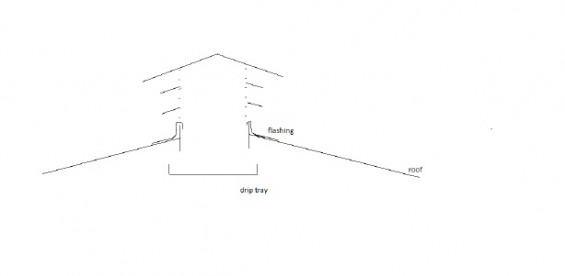Energy Conservation: Roof Vent – 7th Entry into the Wild Energy Challenge – Please Cast Your Vote
This is an entry into the Adult section of Wild Energy. If you like this entry please give it a rating out of five stars (see the bottom of this page).
Hi folks
[Here] are a couple of (rather small) ideas on energy conservation for your consideration. Even if widely adopted they are somewhat unlikely to reduce demand to the extent they will cancel out the need for a new power station – that requires a much more concerted effort spearheaded by government (yeah right…). However perhaps a multitude of small ideas may make a difference.
Kind regards
Alan Thatcher
Most New Zealand houses built since the 1940’s have hipped roofs, the majority sheathed in galvanised steel. On a sunny summer’s day, this guarantees the creation of a very hot bubble of air in the roof space which, even with reasonable insulation, warms the ceiling resulting in very significant
amounts of heat radiating into the living space below. Better insulation may help but as this also results in the air bubble becoming even hotter, the net effect may still be considerable transfer of heat.
With the recent popularity of heat pumps, it seems likely the air conditioning option will become much more widely used especially in the upper North Island. The installation of a simple roof vent may well forstall householders opting for air conditioning on all but the hottest days.
A rough sketch is included above. The vent consists of a rectangular galvanised box with louvres and a simple roof to prevent entry of water. The box would be fastened at each end to rafters or trusses and flashed around the outside. Bird netting would be required on the inside of the louvres and a drip tray with a plastic pipe providing drainage to the nearest gutter placed underneath to deal with any small amounts of moisture that may enter during heavy rain events. An additional option may be flaps which allow the vent to be closed with the onset of cooler weather. These may be operated mechanically or electrically.
Although ideally it would be placed at the peak of the roof, underlying roofing timbers would necessitate off-setting the vent when retrofitting. For a new building, the roof structure could be arranged to accomodate a vent at the peak.
Peaked roofs are easier to vent with a simple louvered device at each end (as was done on some houses built in the 1920s)
Pressure Release Valve Insulation – domestic HWC
Typically one third of domestic electricity is used for water heating. Although improvements to the insulation of hot water cylinders have gone some way to reducing extensive heat losses, the generally very poor standard* of pipe insulation immediately surrounding the cylinder (if it exists at all, the vast majority of NZ houses having none) largely negates these gains . The exit and vent pipes can potentially suck large amounts of heat out of the cylinder and it only requires a relatively small area of exposed pipe to result in very significant heat losses.
For the last 15 years, most newly installed electrical HWCs run at mains pressure. These cylinders are required to have a pressure release valve, located on the top of the cylinder. Although in rare cases there may have been an attempt at insulating the pipes during installation, the valve is always left bare. It is in direct contact with the water in the cylinder meaning it is always hot (usually too hot to touch).
A simple cover moulded out of the same plastic foam used for pipe insulation would solve this problem. It would be shaped to snuggly fit the valve yet would pop off should the valve ever open. It would be easy to remove to allow access for householders to carry out the recommended 6 monthly release of the valve.
*The upskilling of plumbers in proper fitting of insulation should be a matter of urgency (as should the upskilling of inspectors). The cost of adequate insulation is minimal and is much easier to fit at installation than retrospectively.
loading...
loading...
Tags: green energy design
One Comment »
1 Pingbacks »
[…] Happyzine » Energy Conservation: Roof Vent – 7th Entry into the … Rongo Backpackers & Gallery (www.rongobackpackers.com) and Karamea Farm Baches (www.karameamotels.com) welcome Heaphy Track mountain bikers to Karamea and offer hot showers, great food, cold beer and comfortable beds…fire bath, radio station, organic vegetable … I was well known in my youth as an 'effective' thrower of stones and can still bring down a pteradactyl gliding amongst low cloud (imaginary now, most of my throwing) and while I can still … […]




I don’t see anything new here. This kind of vent is standard installation in many parts of the world. Taking it to the next step, many big-box home improvement stores sell solar-powered vents which incorporate a fan to pull the hot air out of the attic space at a greater rate than ambient temperature differentials would.
loading...
loading...